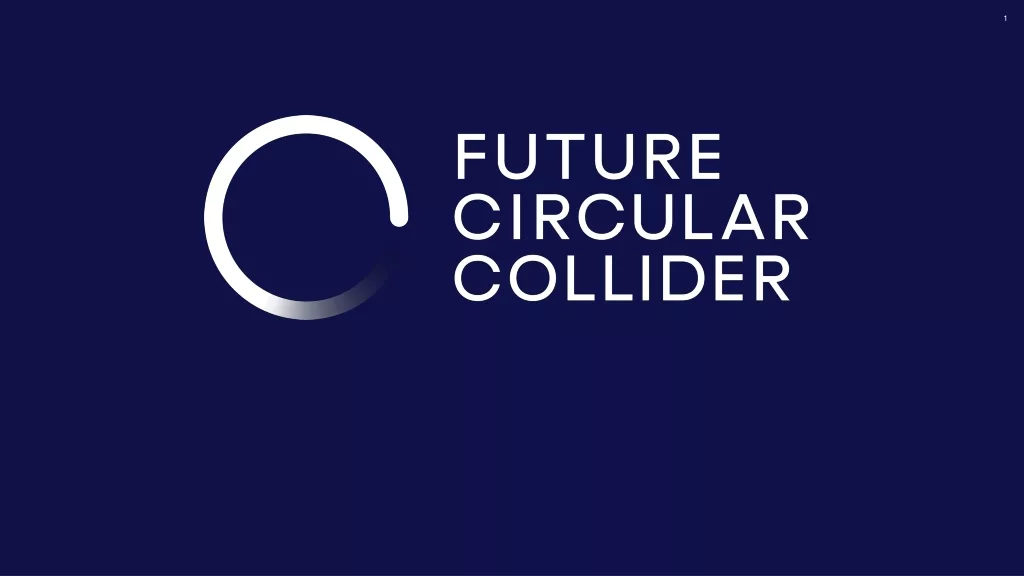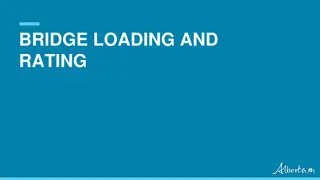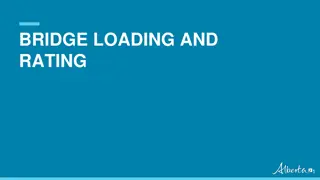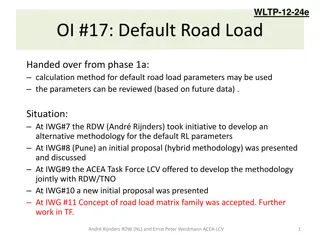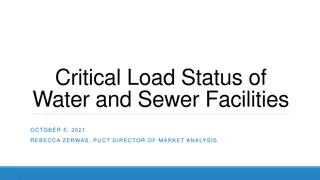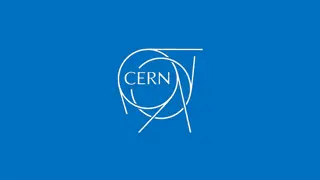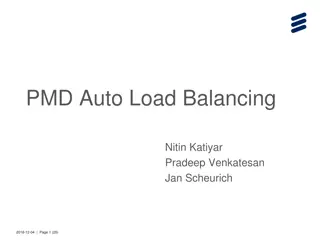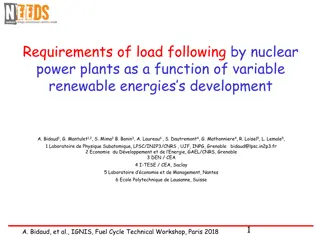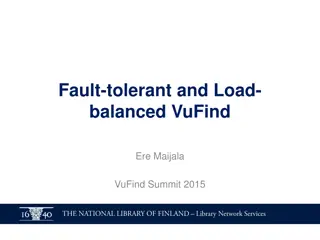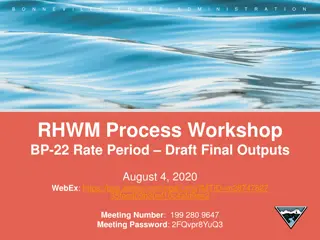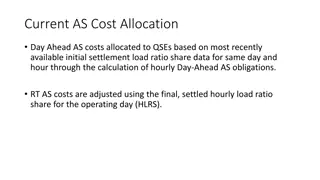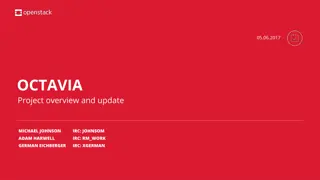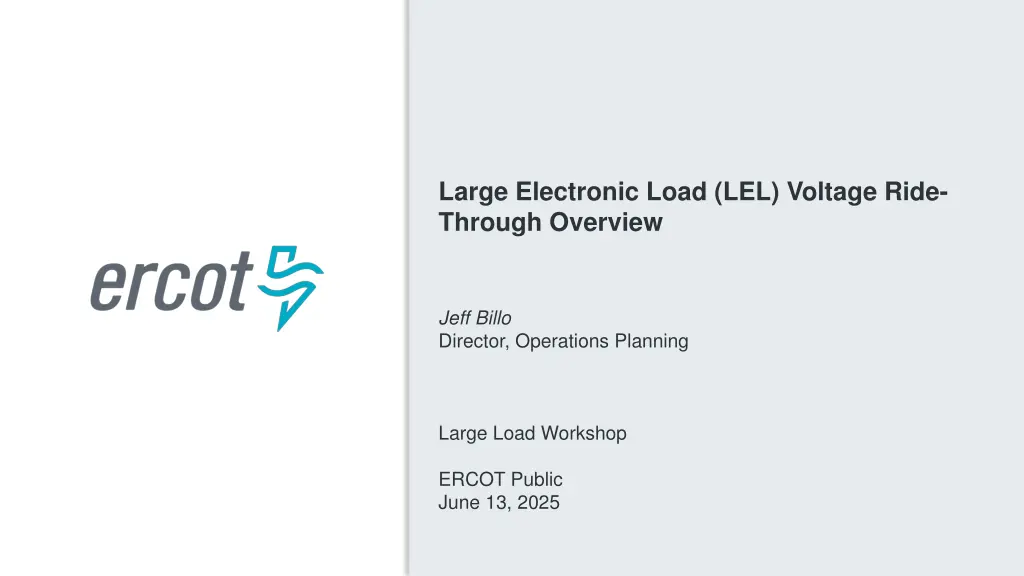
Understanding Voltage Ride-Through in Large Electronic Loads (LEL)
Explore the challenges and implications of Voltage Ride-Through in Large Electronic Loads (LEL), as highlighted in ERCOT studies. Learn about the risks associated with LEL trips and their impact on grid stability. Gain insights into system frequency responses and potential cascading events due to LEL disruptions.
Download Presentation

Please find below an Image/Link to download the presentation.
The content on the website is provided AS IS for your information and personal use only. It may not be sold, licensed, or shared on other websites without obtaining consent from the author. If you encounter any issues during the download, it is possible that the publisher has removed the file from their server.
You are allowed to download the files provided on this website for personal or commercial use, subject to the condition that they are used lawfully. All files are the property of their respective owners.
The content on the website is provided AS IS for your information and personal use only. It may not be sold, licensed, or shared on other websites without obtaining consent from the author.
E N D
Presentation Transcript
Large Electronic Load (LEL) Voltage Ride- Through Overview Jeff Billo Director, Operations Planning Large Load Workshop ERCOT Public June 13, 2025
Numerous Large Electronic Load (LEL) Ride-Through Events Recent Large Electronic Load Ride-Through Events 900 800 Key Takeaway: ERCOT System continues to see a large number of LELs that are not riding through relatively common occurrences on the grid. As the number and size of affected load continues to grow, the risk of a major event increases. 700 600 MW 500 400 300 432 200 332 303 275 260 247 241 236 232 227 100 208 197 190 186 173 169 128 123 121 115 0 MW Reduction of Affected Loads Total Pre-Disturbance Consumption of Affected Loads 2 ERCOT Public
What is Voltage Ride-Through? Transient voltage Current Ride Through Capability distance from fault Location of the fault Area affected by voltage dip resulting from the fault Equipment located outside the area of voltage dip Equipment located inside the area of voltage dip (may trip if unable to ride-through) 3 ERCOT Public
LEL Ride-Through Studies Due to the number of large electronic load (LEL) trips, ERCOT performed a dynamics study of severe fault in West Texas and the Panhandle Study showed voltage dip < 0.70 p.u. for more than 20ms (Information Technology Industry Council (ITIC) curve) impacting a wide area This dip would result in reduction of ~1500 MW of the approximately 3000 MW LELs in West Texas/ Panhandle in the study case (if their ride- through is as good as the ITIC curve) for a particular fault location (could be worse) As the volume of LELs in West Texas continues to grow, the MW of reduction for a single fault is expected to grow as well Result would be different under other operating conditions 3,055 MW of Large Loads in WTX study case Key Takeaway: If the volume of LELs that cannot ride-through system faults continues to increase, it could result in a significant loss of load for a single event. ERCOT Public 4
LEL Ride-Through Studies ERCOT has also performed a study of system frequency response to a significant LEL (multiple LELs in same area) trip Under certain critical conditions, the loss of more than 2600 MW of LELs* would cause system frequency to increase to a level (60.4Hz) at which conventional generators are concerned that they might not ride through, which may lead to an uncontrolled cascading event Key Takeaway: If the volume of LELs that cannot ride-through system faults continues to increase, it could result in a major event. * limit represents combined voltage sensitive, consequential and non-consequential LEL loss ERCOT Public 5
All System Risks are Not the Same Higher Potential for Grid Collapse Uncontrolled Load Loss due to Instability or Cascading Controlled Loadshed due to Insufficient Resources or Transmission Speed of Occurrence Hours-Minutes Seconds-Cycles Key Takeaway: Dynamic events are a higher risk for uncontrolled grid collapse than issues that can be resolved by controlled loadshed, and they happen much faster. 6 ERCOT Public
Summary of Problem Statement If the quantity of LELs that cannot ride-through a fault in the area affected by the fault exceeds 2,600 MW under worst-case inertia and foot-room conditions, it could cause system-wide frequency instability if not mitigated. ERCOT Public 7
Summary of Problem Statement and Potential Mitigations Potential Mitigations Plan and Timeline If the quantity of LELs that cannot ride-through a fault, In the area affected by the fault, Exceeds 2,600 MW under worst-case inertia and foot-room conditions, It could cause system- wide frequency instability if not mitigated. Establish voltage ride- through standards for LELs, such that more loads remain connected and continue consuming power from the grid during normal system disturbances LELs can voluntarily design their protection systems to ride-through common grid disturbances Vendor solution presentations at July 11 LLWG meeting Draft voltage ride- through standard at Q3 2025 LLWG meeting ERCOT Public 8
Improved Ride-Through Capability will Reduce Risk If the amount of LELs affected by the voltage dip is too high, it may cause instability or cascading if it does not ride through Improvement of ride-through capability at each facility will reduce aggregate risk Transient voltage Current Ride Through Capability Strong Grid with Dense Installations distance from fault Transient voltage Improved Ride Through Capability Strong Grid with Dense Installations Key Takeaway: Improved Ride-Through Capability is needed. distance from fault ERCOT Public 9
Summary of Problem Statement and Potential Mitigations Potential Mitigations Plan and Timeline If the quantity of LELs that cannot ride-through a fault, In the area affected by the fault, Exceeds 2,600 MW under worst-case inertia and foot-room conditions, It could cause system- wide frequency instability if not mitigated. Implement transmission upgrades such as synchronous condensers, grid- forming STATCOMS, E- STATCOMS, FACTS devices and/or new transmission circuits to strengthen the grid RUC synchronous generation in weak areas New synchronous generation additions in weak areas ERCOT LEL ride-through study showed synchronous condensers provided some improvement in West Texas Six new synchronous condensers in West Texas are scheduled to come online by 2027 ERCOT Planning and Operations are conducting joint study to evaluate benefits of already planned projects and cost/ benefit of additional transmission upgrades Timeline TBD ERCOT is evaluating potential RUC procedure for weak areas Q4 2025 ERCOT Public 10
Significant Impacts may be Widespread or Localized Stronger Grid with Dense Concentration of Voltage- Sensitive Equipment Weaker Grid Stronger Grid The area affected by the voltage dip is the same size, but there is more equipment concentrated in that area Strengthening the grid reduces the area affected by voltage dip during a fault Location of the fault Area affected by voltage dip resulting from the fault Equipment located outside the area of voltage dip Equipment located inside the area of voltage dip (may trip if unable to ride-through) Key Takeaway: System upgrades can limit the area impacted by a fault, but there may still be a problem if too many loads in an area cannot ride through. 11 ERCOT Public
Improving Grid Strength Synchronous Condenser Projects 765kV Transmission Plan Late 2022 Study Existing system With 6 new Synchronous Condensers One new synchronous condenser in- service in 2026; most in 2027 Key Takeaway: Several grid improvements are underway that will help strengthen the system. However, these improvements cannot fully mitigate all of the risk ERCOT Public 12
Summary of Problem Statement and Potential Mitigations Potential Mitigations Plan and Timeline If the quantity of LELs that cannot ride-through a fault, In the area affected by the fault, Exceeds 2,600 MW under worst-case inertia and foot-room conditions, It could cause system- wide frequency instability if not mitigated. ERCOT is conducting a study to evaluate potential increase in 2,600 MW limit for higher foot-room and/ or inertia conditions Q1 2026 LLWG Meeting ERCOT is evaluating the benefits of a potential new Ancillary Service Q1 2026 LLWG Meeting Establish new Ancillary Service to preserve frequency responsive foot-room on Resources Establish higher critical inertia level* ERCOT Public 13
Inertia vs. Frequency Responsive Foot Room Key Takeaway: Worst-case grid conditions from a loss of load perspective is when resource down-frequency response capability is at a minimum. Low inertia conditions are not necessarily the worst-case. Efforts to improve worst-case conditions will need to prioritize increasing down-frequency response over increasing inertia, though inertia is still a factor. Lowest inertia is when frequency will move the most for a load-generation imbalance, but is also when there is highest amount of down-frequency response capability from wind and solar generation Worst case is relatively low (but not lowest) level of inertia and minimum amount of down-frequency response from resources Resource Foot Room High inertia is when frequency will move the least for a load-generation imbalance and is also when there is a high amount of down-frequency response capability from thermal generation Key Concept: Foot Room = the Down-Frequency response capability of resources; or the MW difference between the output of a resource and its lowest sustainable output level, accounting for verified governor droop characteristics, similar to PRC. Inertia ERCOT Public 14
Summary of Problem Statement and Potential Mitigations Potential Mitigations Plan and Timeline If the quantity of LELs that cannot ride-through a fault, In the area affected by the fault, Exceeds 2,600 MW under worst-case inertia and foot-room conditions, It could cause system- wide frequency instability if not mitigated. Establish new Interconnection Reliability Operating Limit (i.e., NERC SOL/ IROL) to maintain system stability Create control room procedures and displays to monitor and control to IROL Large Load Interconnection Process changes to ensure reliable connection of new LELs ERCOT is evaluating need for IROL and control room procedures and monitoring Q3 2025 Subsequent workshop presentations today will cover LLI process changes ERCOT Public 15
Need Coordinated Requirements between System and Users As a bridge needs to meet in the middle, the System Planning and Operating Criteria need to handshake with the requirements for LEL capability and performance If there is a gap, it could result in LEL loss and, potentially, systemwide outages It does not appear to be feasible to sufficiently mitigate all of these dynamic issues from the grid side of the bridge Key Takeaway: Both grid upgrades and load capabilities are needed to adequately address weak grid issues and avoid/mitigate dynamic events. ERCOT Public 16
Building the Bridge LEL Capability/ Performance Improvements Ride Through Reqs for LEL Improved Models Others Operating Procedures Operating Limits Additional Studies Commitment Patterns Others Grid Improvements Synchronous Condensers 765kV Projects Others Key Takeaway: By continuing to resolve identified issues and implement grid solutions AND improved capabilities by Large Loads, we can maintain system reliability while supporting continued changes to the grid. ERCOT Public 17
Questions? ERCOT Public 18
Ride Through Impacts on the Large Load Interconnection Process Agee Springer Sr. Manager, Grid Interconnections Large Load Workshop June 13, 2025
Preface With the identified and growing risk to system reliability from Large Electronic Load (LEL) ride-through behavior, additional information will be collected as part of the Large Load Interconnection Study (LLIS) process Information on operational LELs will be collected via RFI This information will be used in ERCOT studies of LEL ride-through capability and assessments of SOL/IROL violation risk prior to Initial Energization The requirements in this section apply to Large Electronic Loads (LEL). These are facilities where the majority of the energy consumption is from compute-based load mainly data centers and cryptomining loads. Other types of loads are not impacted at this time. 20 ERCOT Public
Agenda Collection of information on LEL ride-through capability Overview of the interim LEL ride-through evaluation process Next steps for operational LELs and LELs in the interconnection process 21 ERCOT Public
RFI for LEL Ride-Through Performance On or before June 30, ERCOT will issue an RFI to all relevant Transmission Service Providers (TSPs) requesting information related to all operational LELs and any proposed LELs that have been approved for energization by ERCOT The RFI will require submission of the following for each applicable LEL in the TSP s service territory The DWG Large Load Survey Updated dynamic models that accurately reflect the ride-through performance of the LEL RFI responses should be sent back to ERCOT by August 31 22 ERCOT Public
Information on Ride-Through Performance from Proposed LELs LELs that have not received approval to energize by ERCOT will be required to complete the DWG Large Load Survey and provide facility-specific dynamic models as part of the LLIS process 23 ERCOT Public
Interim LEL Ride-Through Evaluation Process ERCOT will utilize the DWG survey responses to conduct an interim assessment of LEL ride-through capabilities For existing LELs, the updated dynamic model information will further inform ERCOT s assessment of potential SOL/IROL violations resulting from LEL ride-through performance For new LELs, the dynamic model will be used to assess LEL ride-through capability and risk of SOL/IROL violations prior to Initial Energization The evaluation process is shown on the next slide 24 ERCOT Public
Interim LEL Ride-Through Evaluation Process Coordinate with TSP to fill out DWG LEL Survey and provide updated PSSE model LEL elects to change settings and/or equipment to improve ride through performance ILLE Submit Survey and Model to ERCOT TSP Yes Review Survey Responses and Model Perform Assessment Questions? No OR LEL may proceed to Energization when ERCOT tools and procedures are in place and will be curtailed under some conditions ERCOT Does RT Does the LEL ride through? performance cause SOL/IROL violation? No Yes LEL may proceed to Energization but may be curtailed in the future under some conditions to prevent SOL/IROL exceedance LEL may proceed to Energization Yes No 25 ERCOT Public
Categories of Impacted Data Center and Cryptomining Loads 1. Operational LELs that are energized up to the amount approved by ERCOT with no additional load requested 2. Approved to energize/operational LELs that have not yet energized up to the amount approved by ERCOT 3. Operational LELs energized up to a limit established by ERCOT with additional approved LEL contingent on transmission system upgrades 4. Proposed LELs with approved planning studies that have not yet requested approval to energize 5. Proposed LELs with a stability study that is in-progress or not started 26 ERCOT Public
Next Steps for Impacted LELs 1. Operational LELs that are energized up to the amount approved by ERCOT with no additional load requested Work with their TSP to complete the DWG Large Load Survey and provide updated dynamic models as described on slide 22 LEL must work with their TSP to complete the DWG Large Load Survey and provide updated dynamic models as required by the RFI There will be no change to ERCOT approved consumption amount. However, the LEL may be curtailed under some conditions if a SOL/IROL violation is identified in the future and the LEL dynamic model shows it cannot ride through 27 ERCOT Public
Next Steps for Impacted LELs 2. Approved to energize/operational LELs that have not yet energized up to the amount approved by ERCOT Work with their TSP to complete the DWG Large Load Survey and provide updated dynamic models as described on slide 22 LEL must work with their TSP to complete the DWG Large Load Survey and provide updated dynamic models as required by the RFI There will be no change to ERCOT approved consumption amount and the LEL may continue to increase consumption up to that limit. However, the LEL may be curtailed under some conditions if a SOL/IROL violation is identified in the future and the LEL dynamic model shows it cannot ride through 28 ERCOT Public
Next Steps for Impacted Loads 3. Operational LELs energized up to a limit established by ERCOT with additional approved load contingent on transmission upgrades Work with their TSP to complete the DWG Large Load Survey and provide updated dynamic models as described on slide 22 LEL must work with their TSP to complete the DWG Large Load Survey and provide updated dynamic models as required by the RFI No changes to approved consumption amount for the load currently operational. However, the LEL may be curtailed under some conditions if a SOL/IROL violation is identified in the future and the LEL dynamic model shows it cannot ride through Additional load must go through ERCOT s interim Large Load ride-through evaluation process described on slide 25 before it will be given approval to energize 29 ERCOT Public
Next Steps for Impacted LELs 4. Proposed LELs with approved planning studies that have not yet requested approval to energize Work with their TSP to complete the DWG Large Load Survey and provide updated dynamic models as described on slide 23 If the TSP stability study was previously approved and the model is changed, it may need to re-done with the updated dynamic models The LEL must then go through ERCOT s interim LEL ride through assessment process described on slide 25 before it will be given approval to energize 30 ERCOT Public
Next Steps for Impacted LELs 5. Proposed LELs with a stability study that is in-progress or not started Work with their TSP to complete the DWG Large Load Survey and provide facility-specific dynamic models as described on slide 23 prior to studies may start If the TSP stability study is already in progress, it must be restarted with the updated dynamic models The LEL must then go through ERCOT s interim LEL ride through assessment process described on slide 25 before it will be given approval to energize 31 ERCOT Public
Questions? 32 ERCOT Public
Large Load Dynamic Model and Survey Sun Wook Kang Sr. Manager,Grid Planning Large Load Workshop June 13, 2025
Some Challenges and Large Load Model Survey Document Appropriate dynamic load models are essential since the behavior of LELs during grid events can create critical conditions As the size of individual large loads and the number of large load interconnection (LLI) requests to the ERCOT grid continues to grow, the need for accurate modeling and enhancing stability study process becomes even more critical Dynamics Working Group (DWG) has developed Large Load Data Survey document that is posted on the DWG website, based on the TSP s practice and NERC recommendations TSPs will share it prior to initiating the LL interconnection study process Continued collaboration is crucial to improve dynamic load models and stability studies DWG Large Load Data Survey 34 ERCOT Public
Action Items for TSPs with Large Electronic Loads (LELs) RFI seeking completion of survey will initially be sent to the TSPs that have ILLEs with LELs that are in operation or have received approval to energize Other ILLEs will be requested to complete survey later but nevertheless will need to complete and potentially update stability studies before approval to energization will be provided Upon issuance of the RFI to the TSP, TSP and ILLE should collaborate to address questions in the survey document, particularly those related to the ride-through capability of a LEL TSP submits the survey document. If the dynamic data is expected to differ from those used in the original studies, need to provide updated dynamic model with a clear explanation of the differences Once your submission is deemed complete, ERCOT will review the survey responses and dynamic models. ERCOT may request additional supporting information as needed ERCOT Sends RFI to TSPs Collaboration Between TSP and ILLE TSP Submits Response to ERCOT ERCOT Review 35 ERCOT Public
Questionnaires Ride-Through Capability Questions focusing on ride-through capability Q51 through Q58, Q60, and Q61 under Protection Setting Section Q36 under Dynamic Model Section (note: Q37 is optional but submit PSCAD model if available) Q39 through Q42 under Back Up Section Q17 if it is behind the existing generation, under Basic Load Information Section Example questions Voltage sag levels and timing (sec) where the load is disconnected or transferred to UPS or Backup Generation? Voltage swell levels and timing (sec) where the load is disconnected or transferred to UPS or Backup Generation? Voltage sag levels and timing (sec) where the cooling system is disconnected or transferred to UPS or Backup Generation? 36 ERCOT Public
Questionnaires Ride Through Capability Do the LELs automatically reconnect when voltage returns to normal? Immediately? With delay? Describe conditions and methodology If reconnection with a stagger or ramp, please explain Count of voltage disturbances monitored at POI within a time period before the load is disconnected or transferred to UPS or Backup Generation? Is there backup power such as a generator or battery UPS? Describe the size, type. If load has UPS, what is the UPS operating scheme? Include triggers and timings for switching to UPS (ex. reached a voltage level of 0.75 pu for 3 cycles). Include criteria and timing for reconnection to the grid. Is it automatic or manual? 37 ERCOT Public
Next Step ERCOT will send RFIs by end of June TSPs should submit the RFI responses back to ERCOT by end of August If the submitted data including ride-through characteristics differ from the original study assumptions, the TSP must determine if a stability restudy is needed for a planned LEL in the interconnection process, per PG Section 9.2.3(2) ERCOT plans to assess system impacts under the assumption that planned or operational LELs in West Texas and Panhandle have protection set in accordance with the ITIC curve or updated models provided by TSPs 38 ERCOT Public
Questions? ERCOT Public 39
ERCOT Voltage Ride-Through Assessment Fred Huang Director, Operations Support Large Load Workshop June 13, 2025
ERCOT Large Electronic Load (LEL) Ride Through Assessment Objective: Identify large electronic load (LEL) reduction due to voltage dip or overshoot caused by credible transmission events Identify potential mitigation options if the total LEL reduction exceeds the SOL/IROL Driver: Provided dynamic models do not always reflect the actual performance as observed in the operational events Want to include all existing and planned LELs in the assessment ERCOT Public 41
Assessment Scope Study Condition DWG High Renewable, Minimum Load (HRML) case will be used as the start base case Adjustments may be considered to reflect the projected study year, for example, year 2025 LEL All the existing operational LELs at approved MW, and LELs with approved interconnection studies and projected to connect by end of 2025 Ride-though assumptions ITIC curve will be used as default ride-through capability for LELs Note: ITIC is not ERCOT s proposed ride-through standard but is used as a conservative placeholder based on observed response until further update by the LEL survey response and updated models Expected result Location and magnitude of LEL reduction under tested credible transmission events ERCOT Public 42
Next Step LEL survey response review and model update Potential regular LEL ride-through re-assessment with updated ride-through capability and models will be needed until an LEL ride-through standard is established ERCOT is considering developing a cluster assessment to be performed on an ongoing basis and earlier in the interconnection process ERCOT Public 43
Questions? ERCOT Public 44


